Abstract
1. Imposed sinusoids were used to assess the resistance to movement at the thumb interphalangeal joint.
2. The resistance to high-frequency movements (> 12 Hz) increased when the subject exerted a large voluntary flexing force; this increase was attributable to a greater non-reflex resistance of the contracting flexor muscles. This resistance was essentially `visco-elastic', and the force was phase-advanced on joint position. At moderately large forces (up to half maximal), however, the resistance changed with changing frequency, and over a range 4-12 Hz the vectors which represented joint stiffness described the wide path that is characteristic of an active stretch reflex (Brown, Rack & Ross, 1982a). At frequencies between about 4 and 6 Hz the force was sometimes phase-delayed on position, and the joint exhibited a negative viscous stiffness. When the voluntary flexing force was very large the reflex contributed less to the resisting force, which was then phase-advanced on position at all frequencies of movement.
3. Large amplitude movements did not generate correspondingly large reflex responses; as the amplitude of movement was increased, the reflex component of the resisting force became relatively smaller and the total resisting force was then phase-advanced on joint position at all frequencies.
4. The reflex component of the resisting force (as indicated by the excursion of the joint stiffness vectors) varied from subject to subject and from time to time; the reflex usually became more active late in an experiment when the subject had exerted flexing forces against the imposed movement for some minutes. Extreme fatigue, however, diminished the amount of reflex force.
5. In some subjects the joint-stiffness records indicated a particularly vigorous reflex response at 8-11 Hz, in contrast to a rather feeble response at 6 or 7 Hz. It is suggested that the reflex pathways then had a relatively low impedance to afferent signals that were modulated at 8-11 Hz, related perhaps to the firing patterns of the most recently recruited motoneurones.
6. Under the conditions of these experiments, it appears that the stretch reflex has too small a gain to function as a very effective error-controlled position servo-mechanism.
Full text
PDF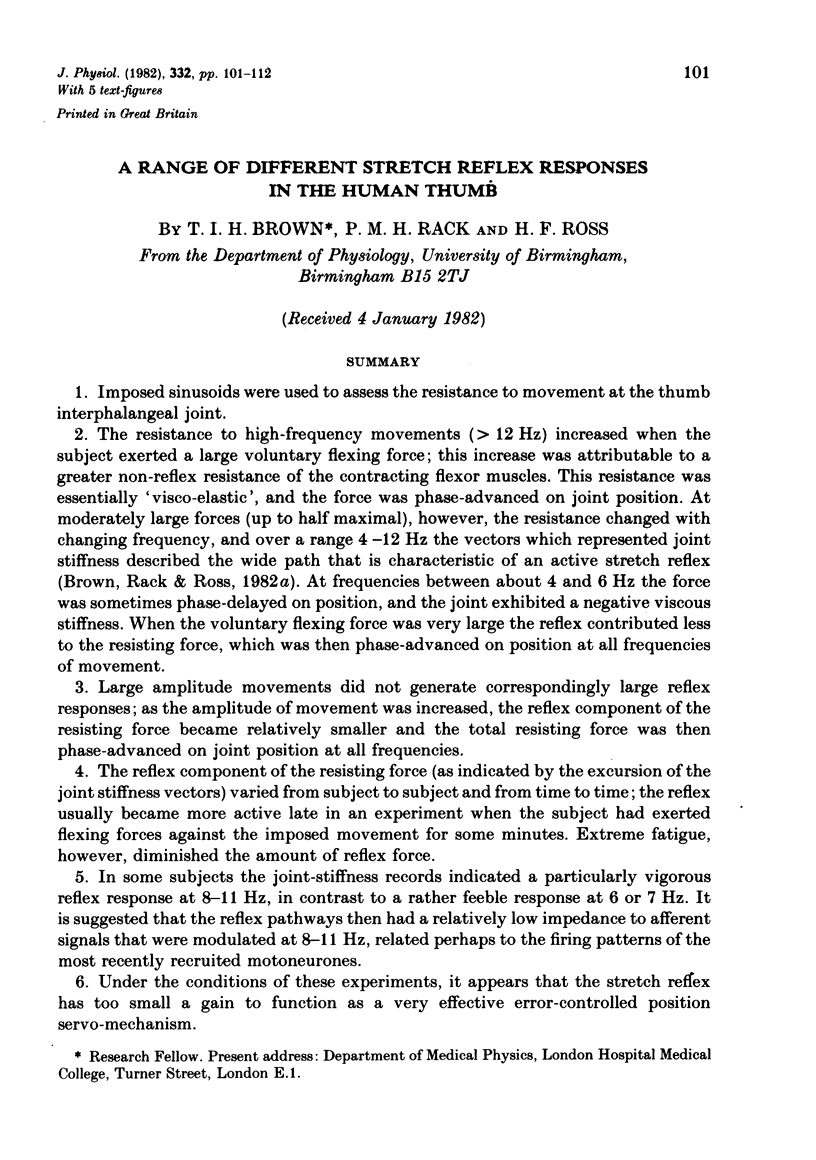
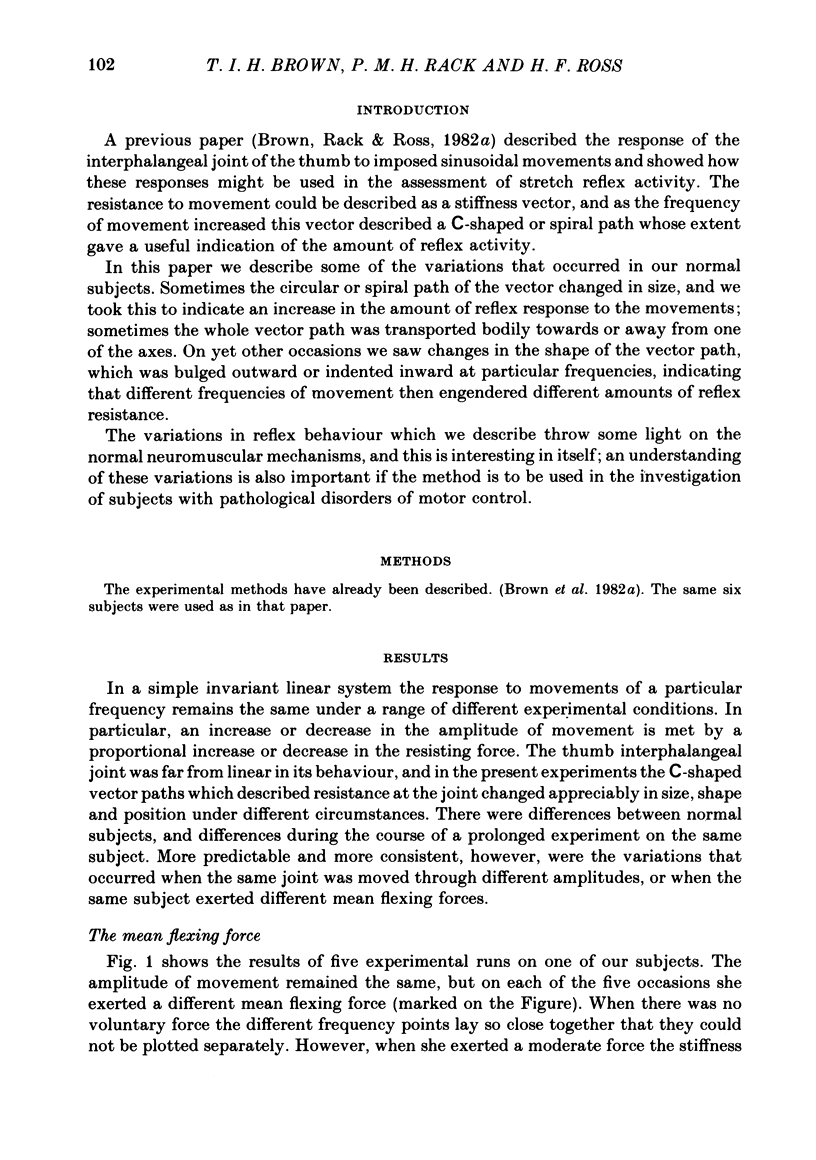
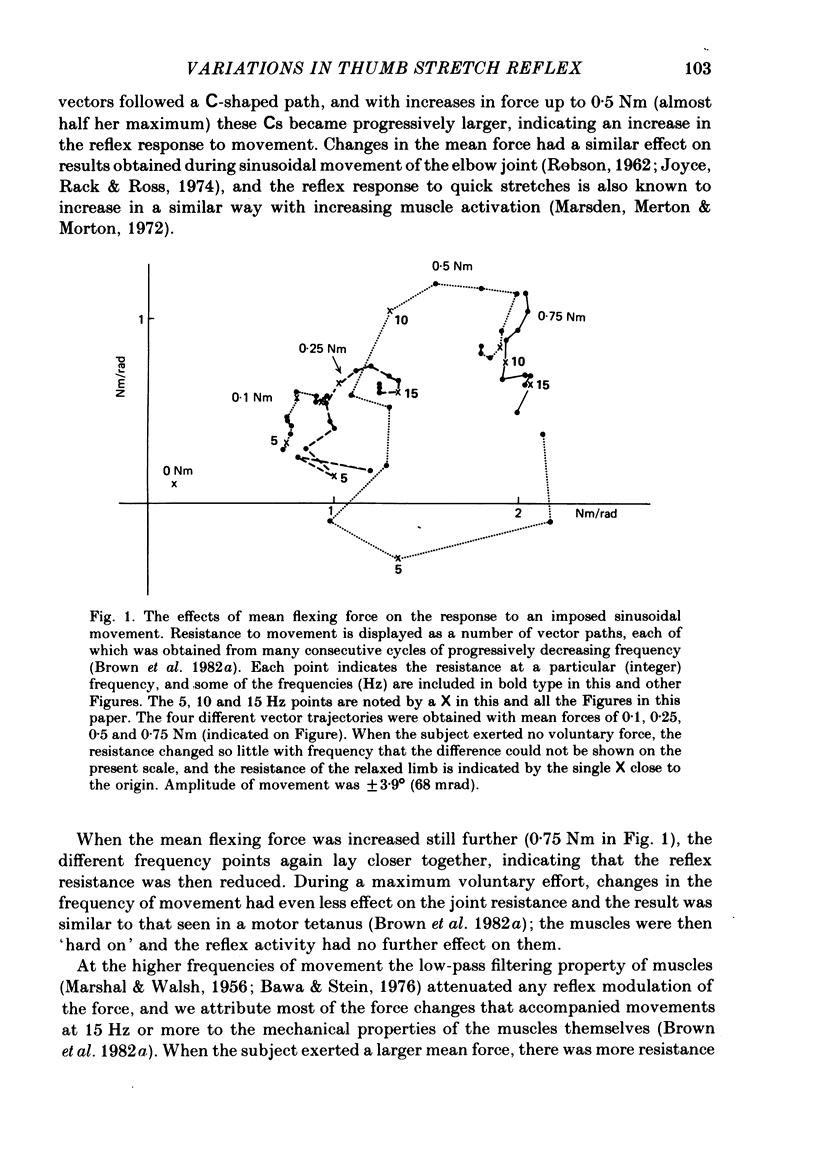
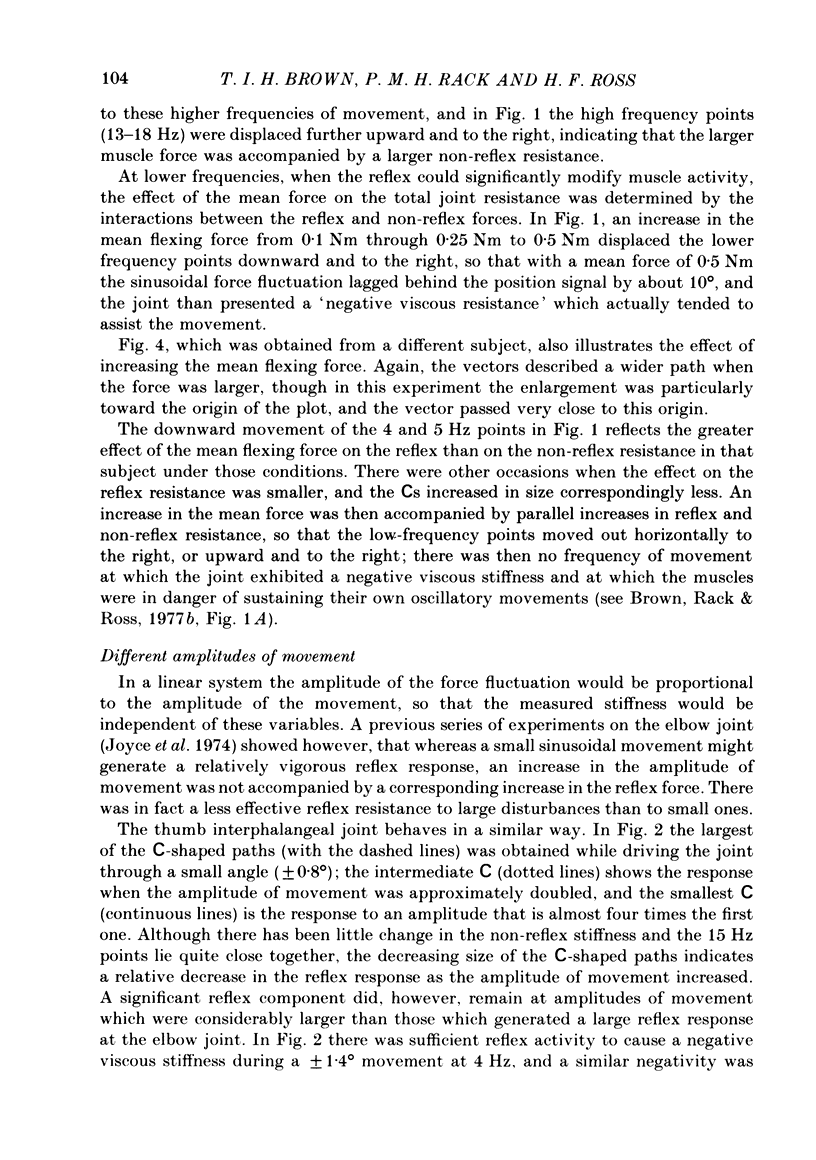
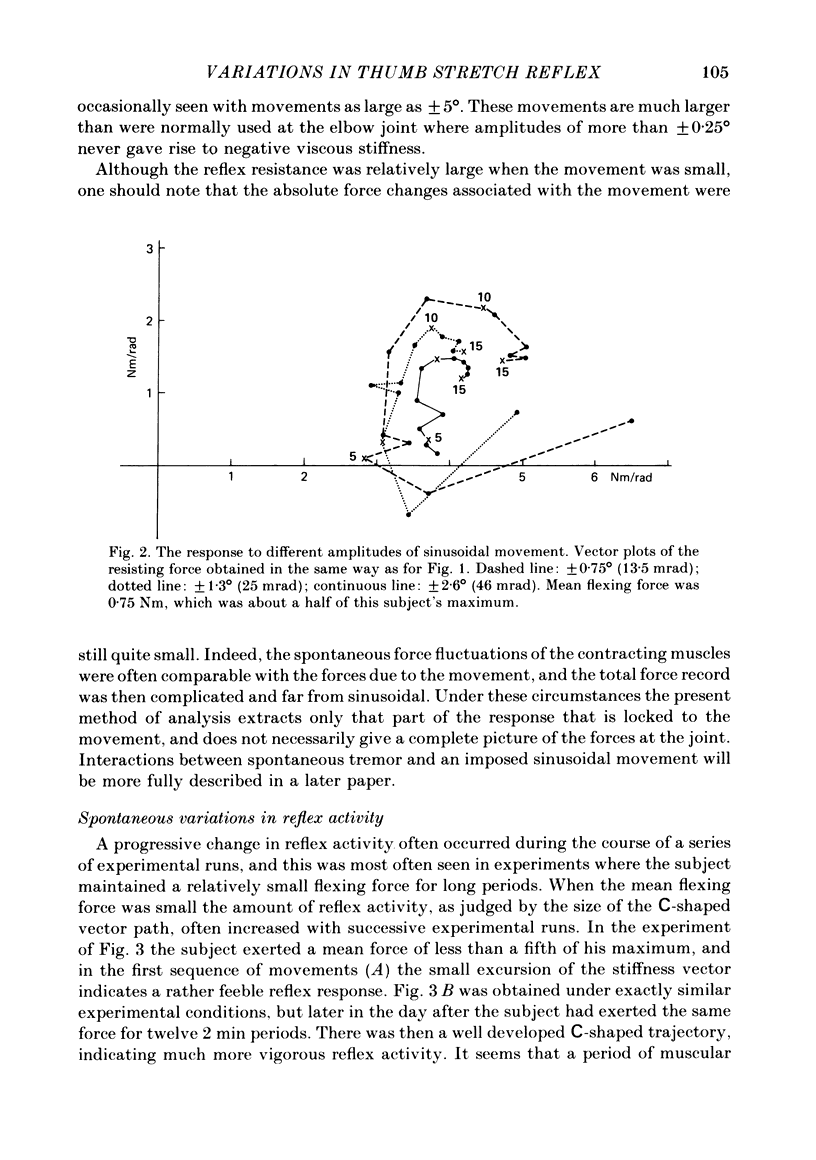

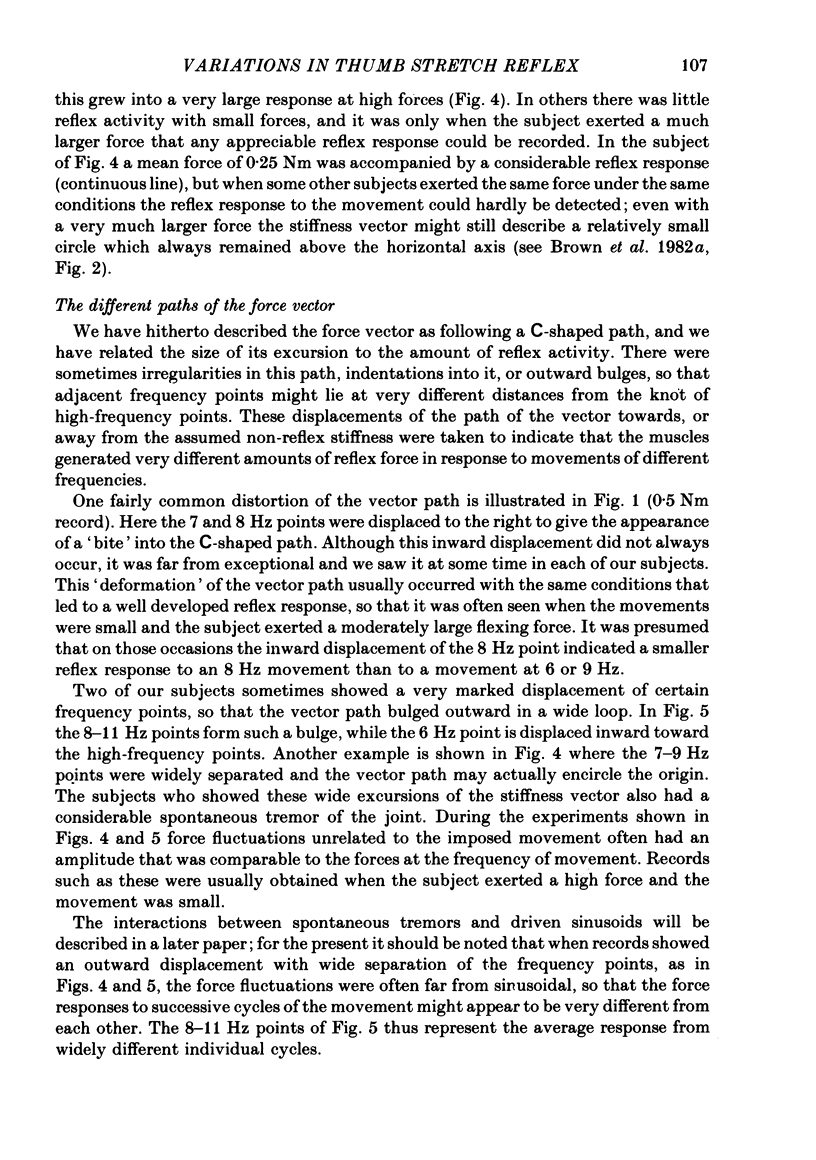
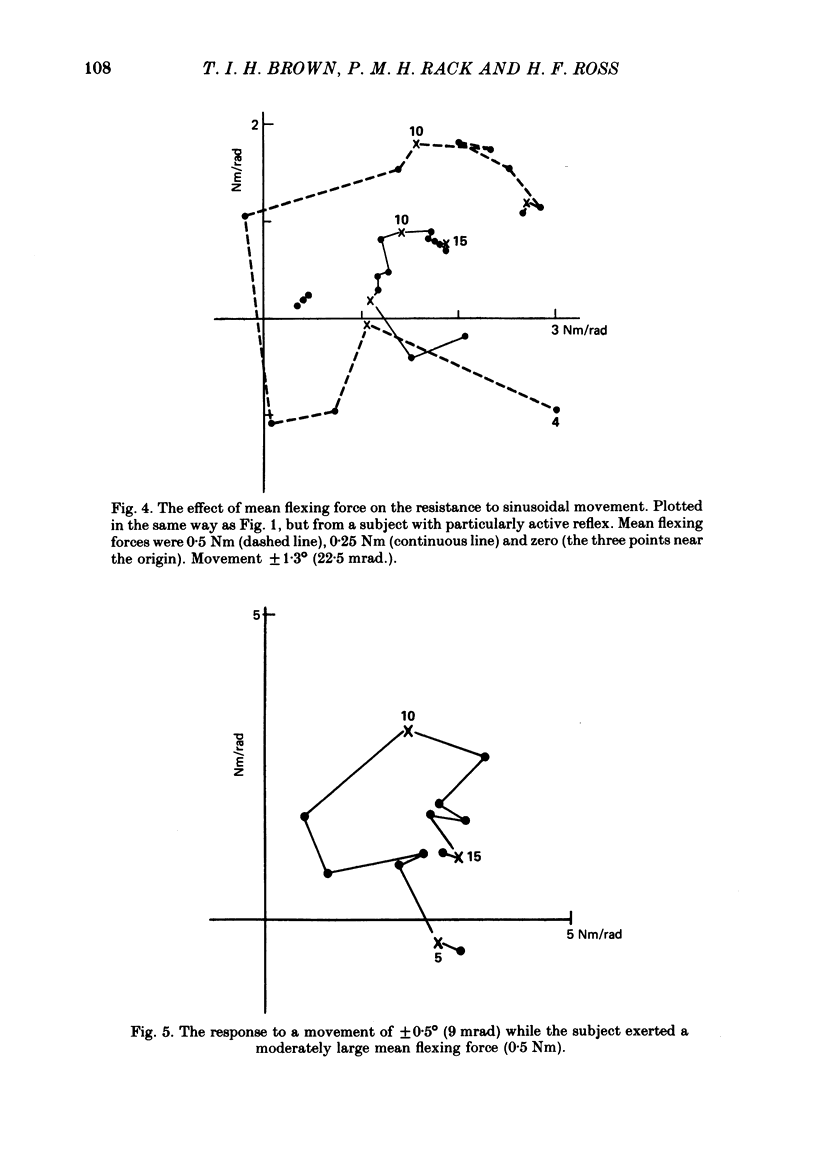

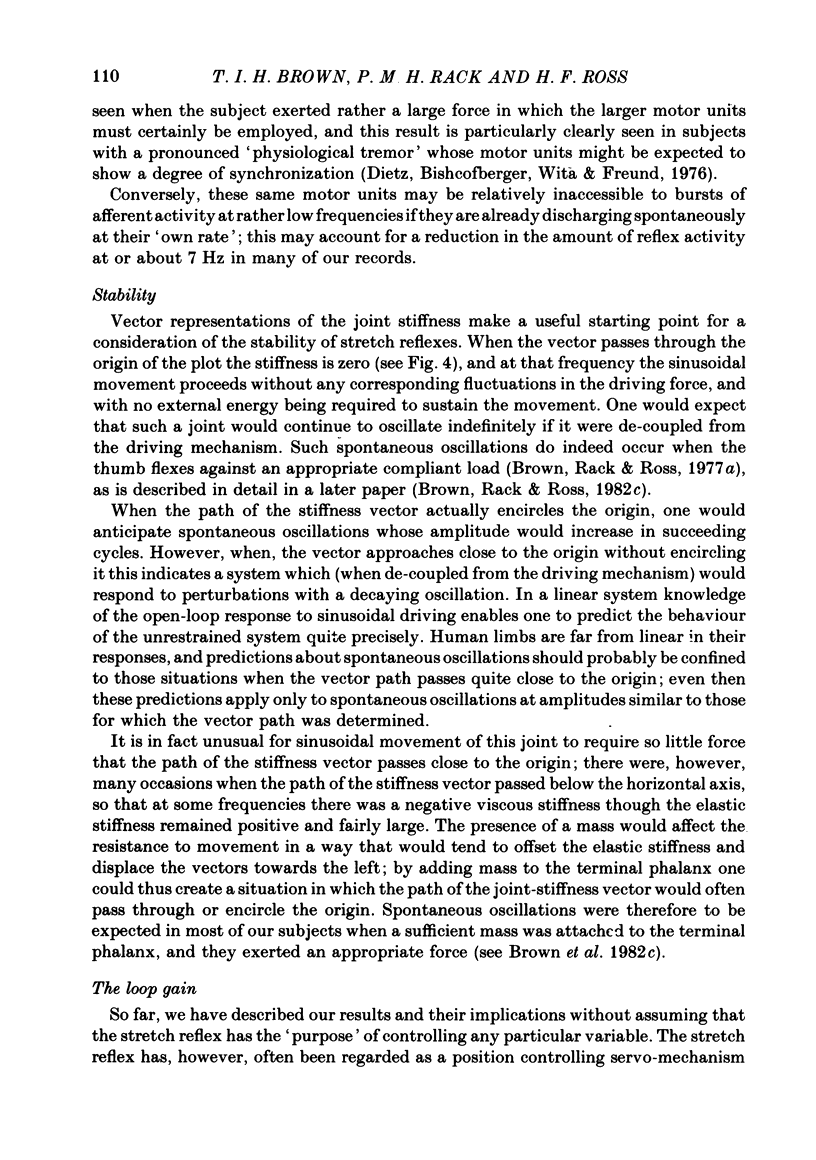
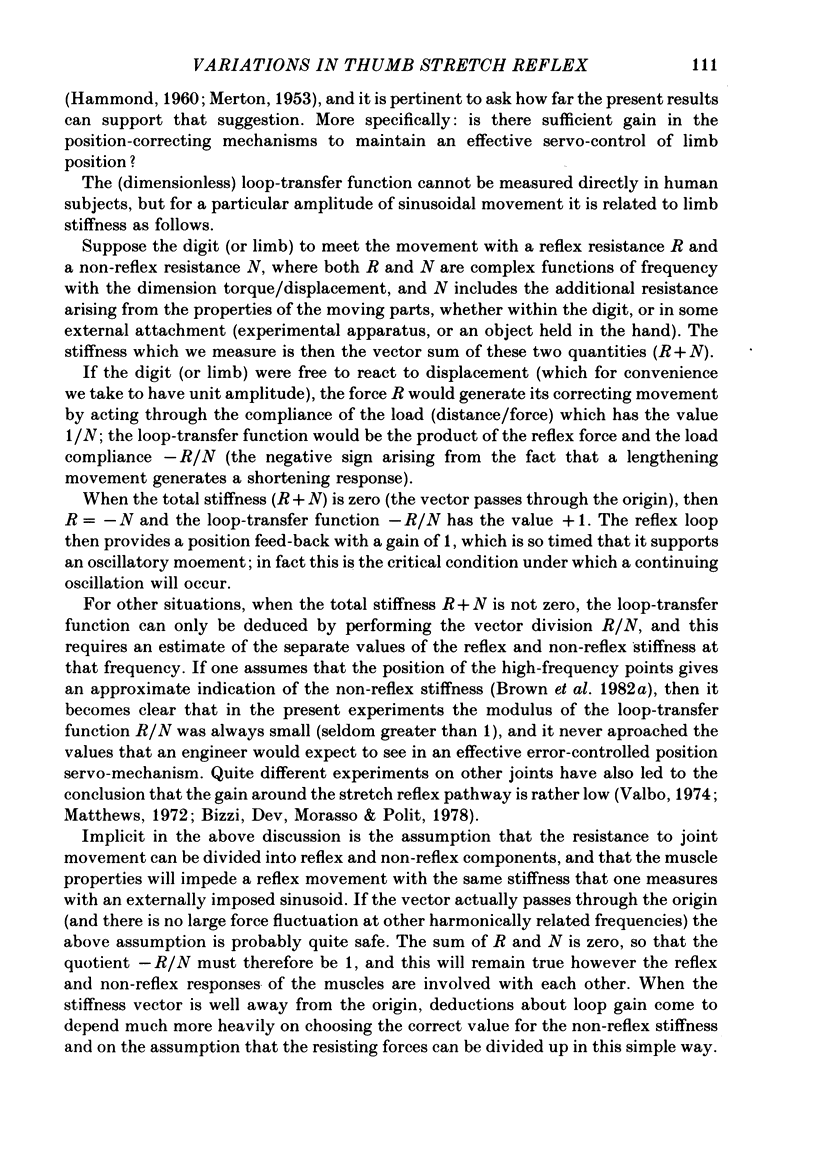
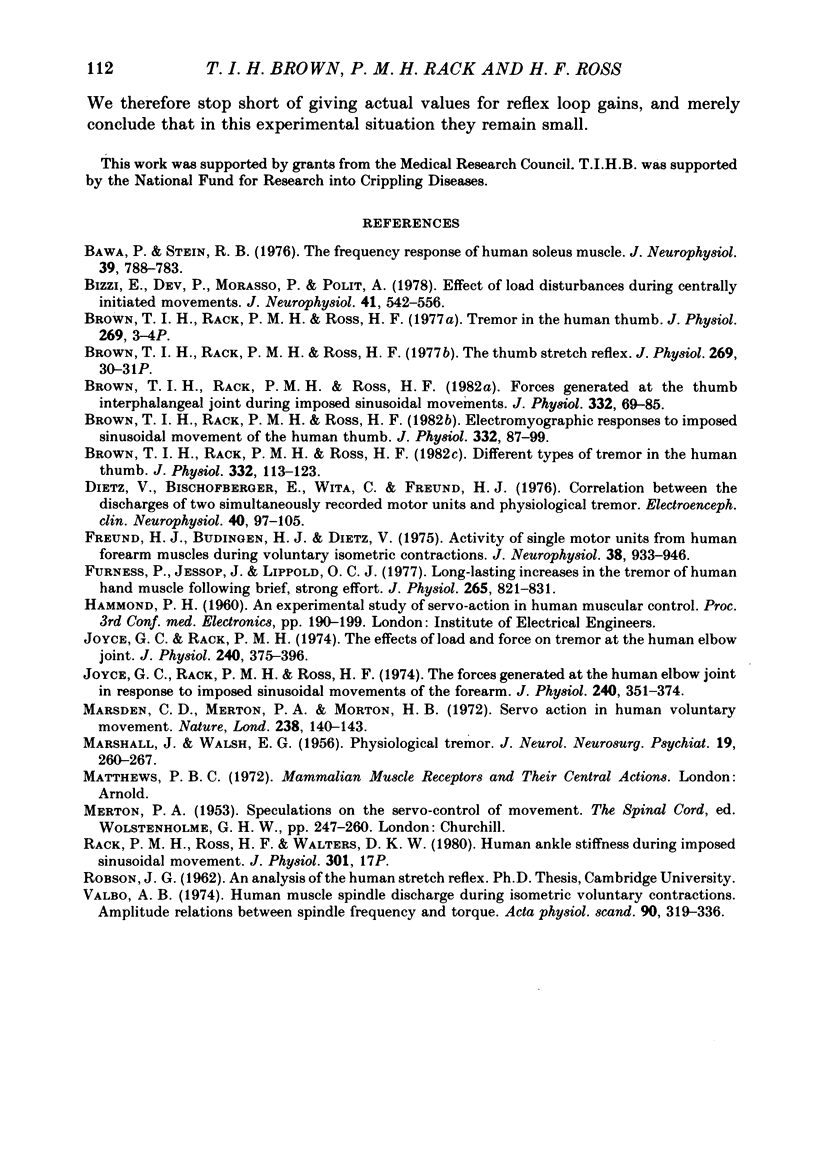
Selected References
These references are in PubMed. This may not be the complete list of references from this article.
- Bawa P., Stein R. B. Frequency response of human soleus muscle. J Neurophysiol. 1976 Jul;39(4):788–793. doi: 10.1152/jn.1976.39.4.788. [DOI] [PubMed] [Google Scholar]
- Bizzi E., Dev P., Morasso P., Polit A. Effect of load disturbances during centrally initiated movements. J Neurophysiol. 1978 May;41(3):542–556. doi: 10.1152/jn.1978.41.3.542. [DOI] [PubMed] [Google Scholar]
- Brown T. I., Rack P. M., Ross H. F. Different types of tremor in the human thumb. J Physiol. 1982 Nov;332:113–123. doi: 10.1113/jphysiol.1982.sp014404. [DOI] [PMC free article] [PubMed] [Google Scholar]
- Brown T. I., Rack P. M., Ross H. F. Electromyographic responses to imposed sinusoidal movement of the human thumb. J Physiol. 1982 Nov;332:87–99. doi: 10.1113/jphysiol.1982.sp014402. [DOI] [PMC free article] [PubMed] [Google Scholar]
- Brown T. I., Rack P. M., Ross H. F. Forces generated at the thumb interphalangeal joint during imposed sinusoidal movements. J Physiol. 1982 Nov;332:69–85. doi: 10.1113/jphysiol.1982.sp014401. [DOI] [PMC free article] [PubMed] [Google Scholar]
- Brown T. I., Rack P. M., Ross H. F. The thumb stretch reflex [proceedings]. J Physiol. 1977 Jul;269(1):30P–31P. [PubMed] [Google Scholar]
- Brown T. I., Rack P. M., Ross H. F. Tremor in the human thumb [proceedings]. J Physiol. 1977 Jul;269(1):3P–4P. [PubMed] [Google Scholar]
- Dietz V., Bischofberger E., Wita C., Freund H. J. Correlation between the dischanges of two simultaneously recorded motor units and physiological tremor. Electroencephalogr Clin Neurophysiol. 1976 Jan;40(1):97–105. doi: 10.1016/0013-4694(76)90183-8. [DOI] [PubMed] [Google Scholar]
- Freund H. J., Büdingen H. J., Dietz V. Activity of single motor units from human forearm muscles during voluntary isometric contractions. J Neurophysiol. 1975 Jul;38(4):933–946. doi: 10.1152/jn.1975.38.4.933. [DOI] [PubMed] [Google Scholar]
- Furness P., Jessop J., Lippold O. C. Long-lasting increases in the tremor of human hand muscles following brief, strong effort. J Physiol. 1977 Mar;265(3):821–831. doi: 10.1113/jphysiol.1977.sp011746. [DOI] [PMC free article] [PubMed] [Google Scholar]
- Joyce G. C., Rack P. M., Ross H. F. The forces generated at the human elbow joint in response to imposed sinusoidal movements of the forearm. J Physiol. 1974 Jul;240(2):351–374. doi: 10.1113/jphysiol.1974.sp010614. [DOI] [PMC free article] [PubMed] [Google Scholar]
- Joyce G. C., Rack P. M. The effects of load and force on tremor at the normal human elbow joint. J Physiol. 1974 Jul;240(2):375–396. doi: 10.1113/jphysiol.1974.sp010615. [DOI] [PMC free article] [PubMed] [Google Scholar]
- MARSHALL J., WALSH E. G. Physiological tremor. J Neurol Neurosurg Psychiatry. 1956 Nov;19(4):260–267. doi: 10.1136/jnnp.19.4.260. [DOI] [PMC free article] [PubMed] [Google Scholar]
- Marsden C. D., Merton P. A., Morton H. B. Servo action in human voluntary movement. Nature. 1972 Jul 21;238(5360):140–143. doi: 10.1038/238140a0. [DOI] [PubMed] [Google Scholar]
- Vallbo A. B. Human muscle spindle discharge during isometric voluntary contractions. Amplitude relations between spindle frequency and torque. Acta Physiol Scand. 1974 Feb;90(2):319–336. doi: 10.1111/j.1748-1716.1974.tb05594.x. [DOI] [PubMed] [Google Scholar]


